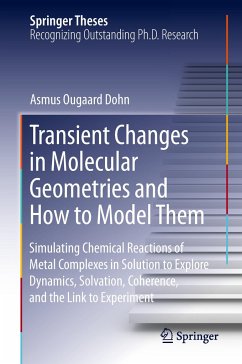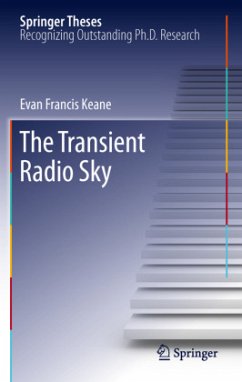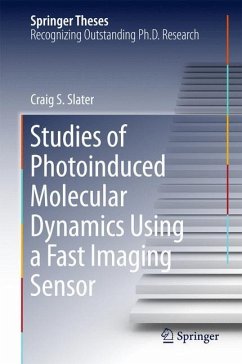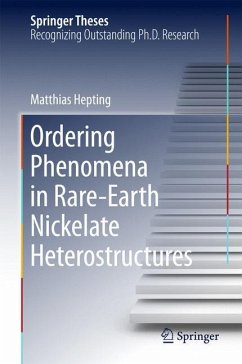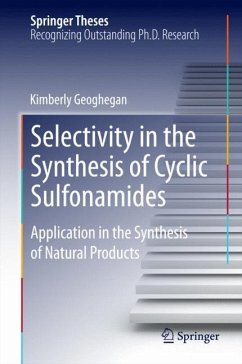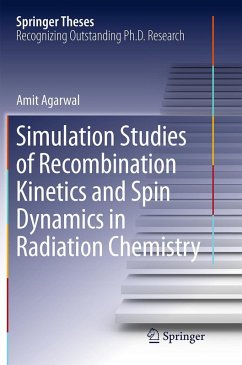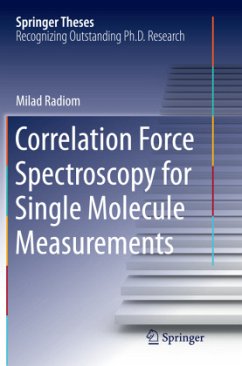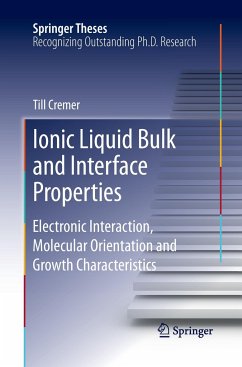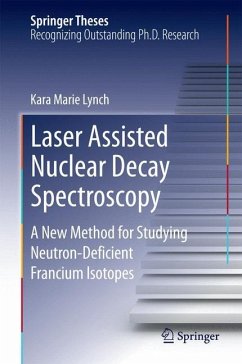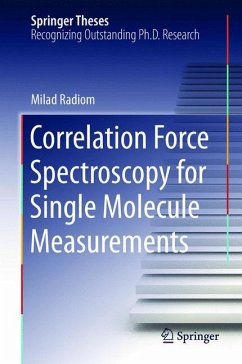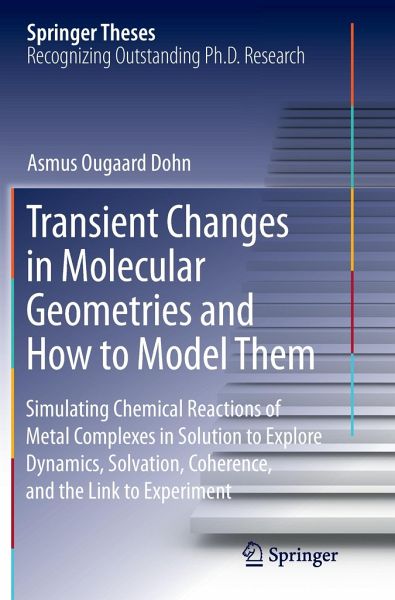
Transient Changes in Molecular Geometries and How to Model Them
Simulating Chemical Reactions of Metal Complexes in Solution to Explore Dynamics, Solvation, Coherence, and the Link to Experiment
Versandkostenfrei!
Versandfertig in 6-10 Tagen
76,99 €
inkl. MwSt.

PAYBACK Punkte
38 °P sammeln!
This thesis examines various aspects of excess excitation energy dissipation via dynamic changes in molecular structure, vibrational modes and solvation. The computational work is carefully described and the results are compared to experimental data obtained using femtosecond spectroscopy and x-ray scattering. The level of agreement between theory and experiment is impressive and provides both a convincing validation of the method and significant new insights into the chemical dynamics and molecular determinants of the experimental data. Hence, the method presented in the thesis has the potent...
This thesis examines various aspects of excess excitation energy dissipation via dynamic changes in molecular structure, vibrational modes and solvation. The computational work is carefully described and the results are compared to experimental data obtained using femtosecond spectroscopy and x-ray scattering. The level of agreement between theory and experiment is impressive and provides both a convincing validation of the method and significant new insights into the chemical dynamics and molecular determinants of the experimental data. Hence, the method presented in the thesis has the potential to become a very important contribution to the rapidly growing field of femtosecond x-ray science, a trend reflected in the several free-electron x-ray lasers (XFELs) currently being built around the world.
Light-induced chemical processes are accompanied by molecular motion of electrons and nuclei on the femtosecond time scale. Uncovering these dynamics is central to our understanding of the chemical reaction on a fundamental level.
Asmus O. Dohn has implemented a highly efficient QM/MM Direct Dynamics method for predicting the solvation dynamics of transition metal complexes in solution.
Light-induced chemical processes are accompanied by molecular motion of electrons and nuclei on the femtosecond time scale. Uncovering these dynamics is central to our understanding of the chemical reaction on a fundamental level.
Asmus O. Dohn has implemented a highly efficient QM/MM Direct Dynamics method for predicting the solvation dynamics of transition metal complexes in solution.



